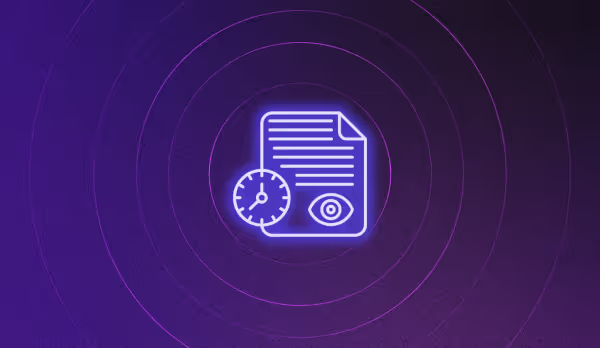What is revenue recovery and why is it vital for ecommerce retailers

This blog discusses the impact errors have on the ecommerce industry, explores the newest evolution in error monitoring, and explains why this new evolution is an absolutely crucial addition to ecommerce tech stacks.
In 2023, lost revenue due to website errors is set to hit 64.2 billion dollars.
*Calculated from Baymard’s 2022 Cart Abandonment Study
Obviously having a sleek-looking, fast-reacting, top-of-the-line ecommerce website is critical in enabling online sales and creating a stronger Brand-to-Customer relationship. And in order to make that a reality, there are a ton of softwares and third party platforms that are integrated into your site.
Problem with that, though, is it opens the door for errors to be introduced into your system after you’ve tested everything in your staging environment. While your development team may have cleaned up all native-code-based errors before going live, new types of sessions and unscheduled platform updates happen all the time completely outside of your knowledge or control. These updates, or these untested user flows, can connect with your site code in ways it is not expecting, resulting in processes failing and users not being able to interact with site assets as desired or planned.
Now, we’re not suggesting that you should cancel all your third party integrators… That would be catastrophic for the operation of your website, and a completely unrealistic undertaking.
What we are saying, though, is it is absolutely imperative to implement a system to ensure no errors come into your environment that your team doesn’t know about, and that the errors that are occurring can be caught and resolved as quickly as possible.
Many folks in the ecommerce industry would typically say these are all covered by implementing Error Monitoring processes.
To a large degree, that’s exactly right; ecommerce brands need to start monitoring their errors. But, it can’t just be about monitoring errors… There’s nothing novel or new about that conversation. What there needs to be, and is now coming to fruition, is another evolution in the error monitoring space, one that really brings home the business impact of errors.
To do this, we first need to stop thinking about website errors as just a UX inconvenience, and start thinking about them as what they really are: a detrimental revenue drain.
Errors cause massive losses in revenue
As you read at the beginning of this blog, revenue loss due to website errors is set to be an almost $65 Billion dollar problem in 2023. (Click here for further reading on the business impact of ecommerce errors)
Every day, we see brands where their products don’t load, where the Add-To-Cart button isn’t responsive, where the PayPal integration tosses prospective buyers into an infinite load, where the shipping details form doesn’t submit, where whole sections of the website are down. These cause users to drop off your website, to abandon their full carts, to not be able to finish their checkout process, and to leave money behind.
The sad part is - and your Marketers know this well - it takes A LOT of effort to get users onto your website. It takes even more effort to get those users on your site truly interested in navigating around it to see what you have to offer. There’s more effort once again to get those prospective customers to show true intent to buy something (Ex. adding something to their cart). And then of course, more effort still to get those customers to commit their hard earned money to purchase an item (or items) they haven’t even seen in person yet. (Learn more about how Revenue Recovery can be used in conversion rate optimization efforts)
Imagine, after all of the brain power and hours of work to get even a single individual onto your site and through all those buyer steps, that at the end of the line that prospective customer, who has their credit card ready and waiting for you, can’t actually give you their money.
Imagine this is happening in-store? A customer gets all the way up to the cash register with an arm-full of items and the cash register isn’t working. It’s literally like leaving money on the table.
So how do you recover that money? How do you stop more revenue from being lost?
This is where the idea of Revenue Recovery comes into play.
What is revenue recovery?
In the context of ecommerce tools, Revenue Recovery is the act of systematically prioritizing the removal and resolution of revenue-blocking errors that would have otherwise, if left unaddressed, forced money to be left behind.
How is this different from standard error resolution?
While error monitoring softwares focus on identifying errors that are affecting many users, regardless of the outcome and implications, a revenue recovery software prioritizes errors that are impacting your businesses most important metrics: revenue and conversions.
Revenue Recovery tools detect and prioritize the errors on your site that are having the largest negative impact to your conversions and revenue, ensuring that resources are allocated to only the most pressing issues.
Currently, ecommerce professionals looking into error monitoring have to make assumptions on impact based on occurrence metrics, have to spend time deciding which errors they think are important, then have to send off a set of fix requests to their product and development teams who then spend hours trying to replicate the issues, and then resolve them. (The average developer spends 25% of their time on error resolution workflows)
But guessing and knowing are two different things, and being able to quickly know what errors are losing your business revenue, at a glance, ensures efficient time management for your ecommerce team, your support team, and ultimately your development team.
Your executives will also be happy knowing that any time taken away from the developers’ core functions is still being spent on requests with guaranteed ROI.
How does revenue recovery compare to DXPs and APMs?
There are 2 widely recognized types of error monitoring softwares in the industry today: Application Performance Monitoring tools (APMs) and Digital Experience Platforms (DXPs).
Revenue Recovery has taken the best features from both.
Below we can see the differences in how the SaaS industry defines the different categories.
The DXP category is defined as follows:
Functionality
Provides a platform which links multiple applications together to form seamless digital experiences for customers
Value props
1. Improved UX/UI; simpler, more seamless customer interactions
2. Improved conversion; less abandonment = more revenue
3. Allows integration of numerous software applications
Comparisons
- Decreases abandonment; not proactive, purely reactive
- Does not provide in-depth insights or metrics
The AMP category is defined as follows:
Functionality
Monitors website vitals and user experience; focuses on keeping core website functional and provides diagnostics
Value props
1. Performance insights; allows for review of critical issues
2. Limits unexpected downtime (and ultimately conversions)
Comparisons
- Provides insights into backend causes of issues
- Provides lagging data to review issues after identified
In comparison, Noibu defines the Revenue Recovery category as follows:
Functionality
Monitors UX and website performance concurrently to capture and prioritize bugs which lead to abandonment and lost revenue
Value props
1. Data-driven prioritization framework; revenue-centric bug list = only focusing on what will move the needle
2. Data visibility for developers; capturing the data required by developers to remove hours of manual work
3. Eliminates reliance on customer reporting or replication
Comparisons
- Captures UX and website vitals concurrently
- Captures and prioritizes real-time data for action and resolution
Summary
Having a Revenue Recovery tool in place makes sure you can stop relying on your customers to alert you to errors, ensures your team is never missing a bug on your website, forces your team to be more data-driven with their decisions, and enables efficient error resolutions.
Check out a few of our other blogs to learn more about the advantages of bringing on a Revenue Recovery tool, including:
- Preserving and growing ecommerce revenue during a recession
- Catching tech debt in ecommerce: Why APMs aren’t enough
- There’s a new way to do conversion rate optimization (CRO)
- How Noibu’s error detection improves time efficiency and streamlines workflows
- The common challenges Noibu solves
- Why ecommerce developers love Noibu




